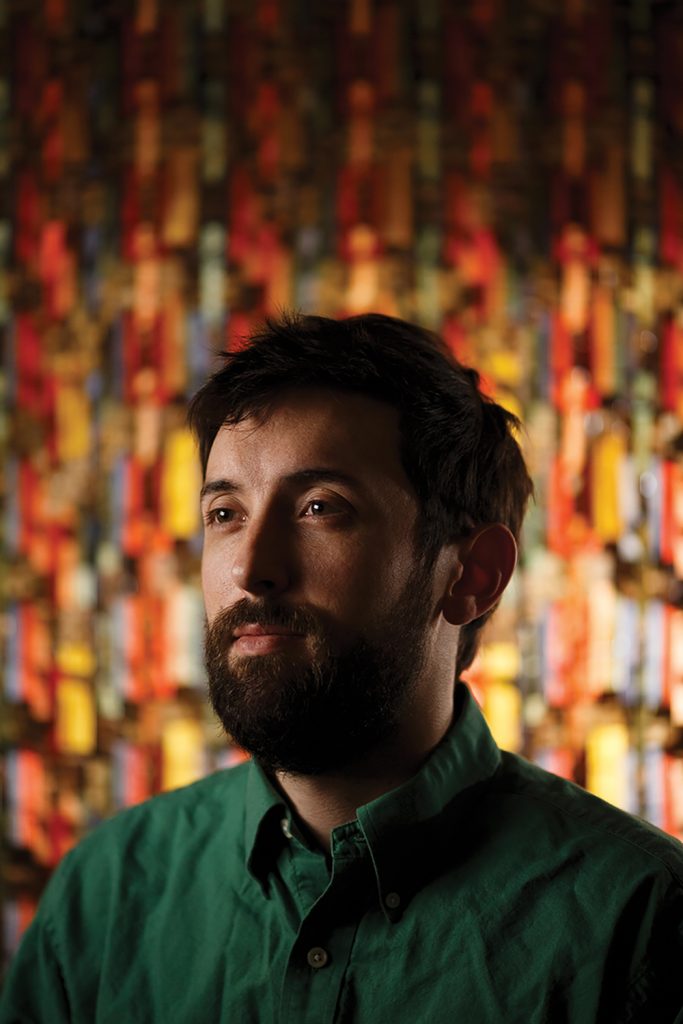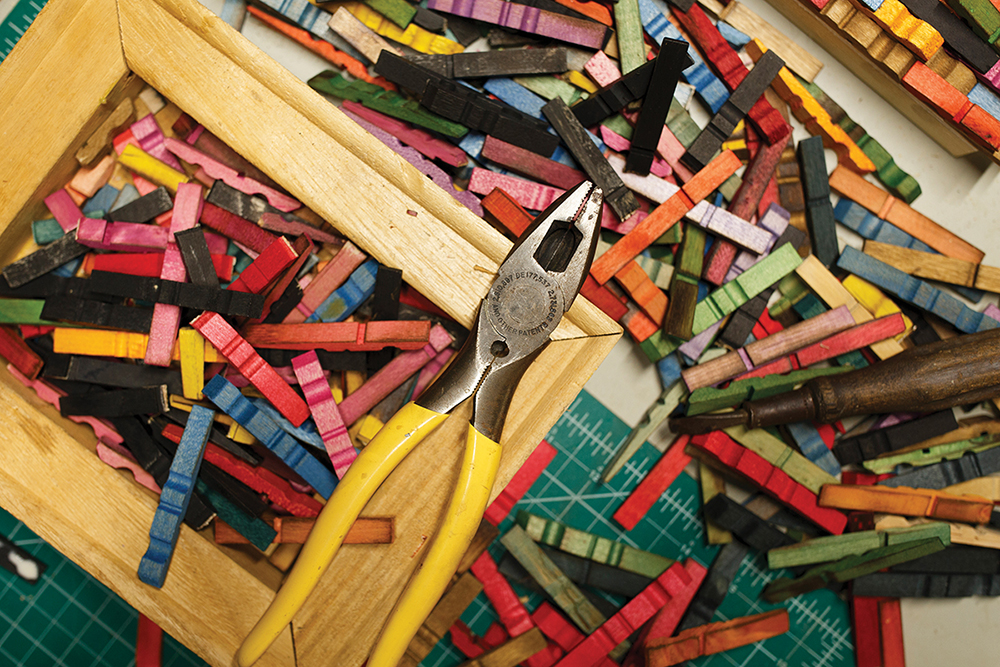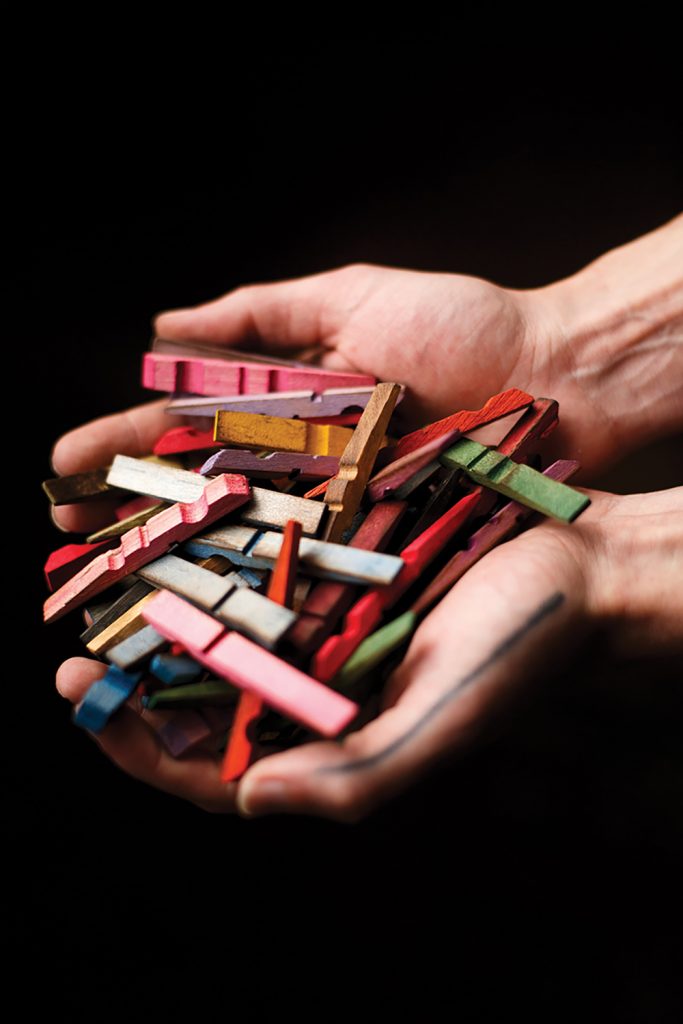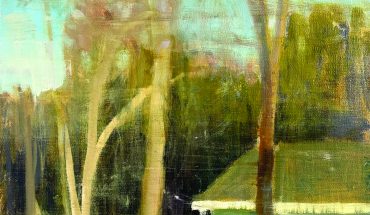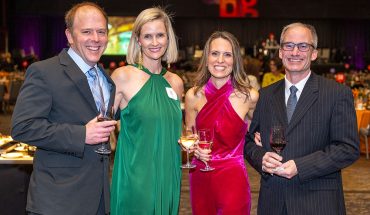This emerging Raleigh maker challenges creative conventions by using a humble, unexpected medium that he transforms into compelling works of art.
by Colony Little | photography by Eamon Queeney
Assemblage is a medium that is hard to define. Some describe it as recycled or junk art, while others refer to it as yard or folk art. As a medium that abandons rules and foregoes convention, assemblage art privileges found materials both symbolically and economically.
The simple gesture of taking something that exists and transforming it into something new opens new worlds of accessibility in art, a profession that is often perceived as an ivory tower of exclusivity and inaccessibility.
As a child, Raleigh-based artist Davis Choun discovered his love for assembling using a modest, non-conventional material in an unusual setting: blocks in math class. “We were given this plastic container of shapes, and there were yellow hexagons and green triangles,” he explains.
“I was grabbing these pieces, and I put a little hexagon in the middle, then I’d get the triangles and put a triangle on every side. I slowly made this large mosaic.” Fortunately, his improvisational design drew the attention — not the ire — of his teacher, who praised him, saying he had the eye of an artist. “It was this weirdly specific thing that I often think about, because I’m essentially still doing this,” Choun says.
Choun “paints” with objects, often creating colorful patterns from one particularly unconventional item: a clothespin. He composes them by the hundreds, sometimes thousands, using color, shadow, texture and depth to create patterns that shape-shift depending on your perspective.
Some pieces evoke familiar motifs like herringbone or chevron; one piece composed of yellow and pink clothespins appears as a series of hearts or arrows, depending on your gaze.
For Choun, the clothespin was a rather spontaneous inspiration for his artistic journey. Growing up in Rutherford County in western North Carolina, he gravitated toward computer-aided design and drafting classes, but found himself drawing designs and patterns in his spare time, so he started taking art classes.
During his senior year of high school, he came across a photograph of a dress made entirely from clothespins that sparked an interest in unconventional materials.
“We had a ‘name your own project’ in my art class, and I got this idea; I peeled some clothespins apart,” Choun says. He then painted the flat surface of the pins in multiple colors and let them dry, then glued them in a random arrangement onto a wooden board. (To make it truly organic, he first mixed them together in a container, then covered it with a towel so he couldn’t see what he was pulling out.)
“I didn’t know what order to put them in, or what colors I wanted to use, and I didn’t want to be responsible for which ones came next,” says Choun. How he was creating was more important than what he was making, and in a sense, he was responding to the freedom of the assignment.
“I think I was reacting to the idea of no judgment,” he says. “There’s something about having the freedom to not care if you mess up.”
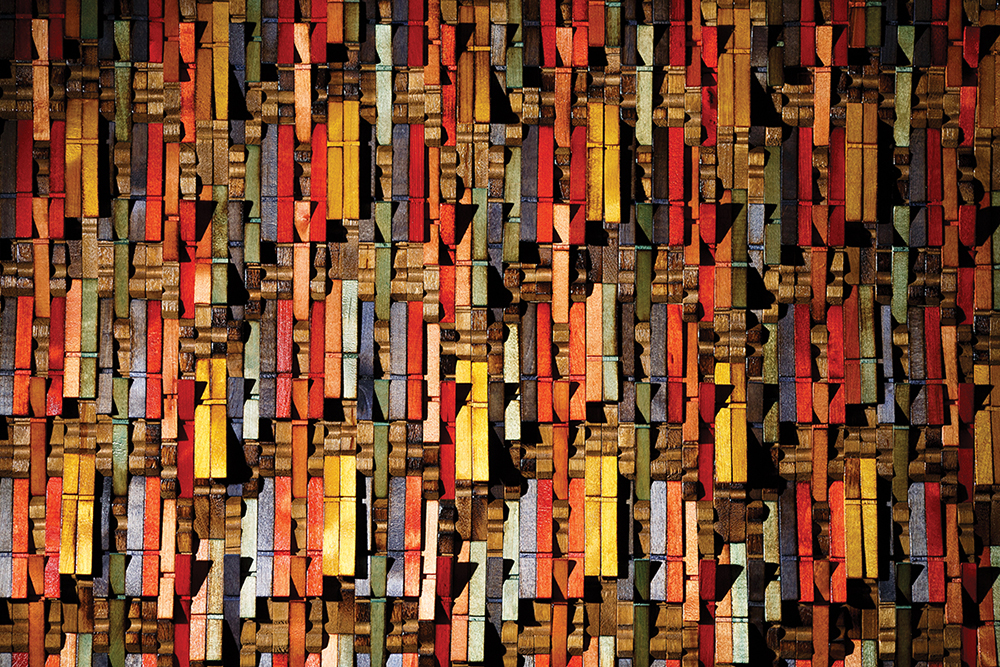
After enrolling at North Carolina State University in 2010 to study education, Choun transferred into the Design Studies program, ultimately focusing on studio arts. In 2012 he made his first sale: the piece he made in his high school art class, the symbol of his creative freedom, was purchased by NC State as part of its student art sale program. The work was displayed in the student union the following year and again in 2018 after the completion of the new Talley Student Union.
Choun graduated in 2015 from the Art + Design school, and he’s been working with clothespins ever since, evolving his method of painting and manipulating material in a process that remains largely improvised.
He originally started out using acrylic paints to create his pigmented pins, but has evolved his process. “I feel like I’ve always been reacting to what I want to achieve and what I can create more efficiently with better methods.
Now I use dye, or to get this sense of age or patina, I’ll burn them to make different little markings and grooves to add a bit of roughness,” Choun says. He actually uses a wok in his kitchen to burn the clothespins. “I have a butane torch and I flip the pieces in the wok.
That’s kind of the fun part for me,” he says. “I’m a bit more obsessed with the process, rather than the actual thing.”
Over the years he’s dabbled in other art forms, from ceramics and textile printing to 3D portraiture and photography, but he has always returned to assemblage.
While many assemblage artists make cultural, environmental or political statements with their work, Choun’s practice is more procedurally rooted. He harkens back to his NC State days, where he was looking for ways to differentiate himself.
“We’re in studio classes with 20 other students and you’re bouncing ideas back and forth; they provide little pieces of information for you to explore that you might not know about because their expertise is in a different area with a different perspective about how to solve problems.
That environment provided me freedom to do what I wanted with people that challenged me to differentiate myself. I was never concerned with trying to be the best at anything, I was more interested in doing something different.”
Last fall, Choun created nine pieces measuring 12 square inches each for a group show called Small Work, Big Impact at Momentum Gallery in downtown Asheville.
The show was a success; all of his works sold. He’s currently working on another series of works for the gallery. The demands of customers now create a new variable in his artistic approach, but it’s a challenge that he takes in stride. “The process is the real art to me,” he says.
This article originally appeared in the March 2024 issue of WALTER magazine.

